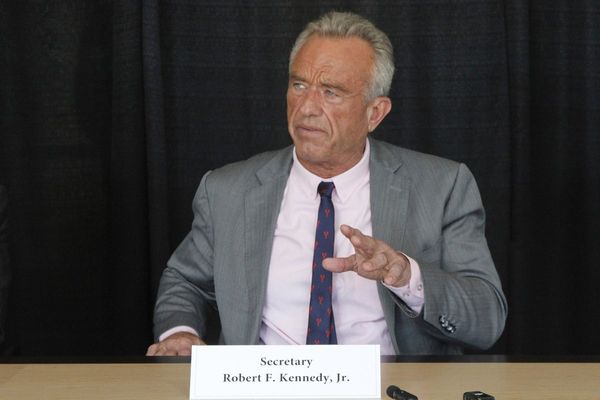Urbanisation in India is shaped by three important factors. First, colonialism played a catalytic role in creating urban spaces, which continued even after Independence until the 1960s. Second and third, the Green Revolution and neoliberalisation in the 1970s and 1990s have consolidated these urban spaces into concrete enclaves. Metropolitan cities such as Chennai, Mumbai, and Kolkata, which are products of colonial urbanism, metamorphosed radically in later years.
These cities have expanded quite substantially and witnessed rapid urbanisation to accommodate more people and their demands. The wealth generated due to the Green Revolution and neoliberal policies has further accelerated urban expansion, albeit in an unequal manner. Newer forms of consumer culture have seeped effortlessly into these urban spaces, thus bringing revolutionary changes in the housing, health, and education sectors.
A city within a city
With reference to Calcutta, in the initial years of Independence, the city was called entangled, congested, and decaying by the then State government. A political decision was initiated to build Salt Lake City, a city within Calcutta city, eventually envisioned as a supposedly clean Tabularasa city. The entanglements in the existing city, notably pertain to its poor infrastructure facilities, such as water, sanitation, and slums, with poverty, traffic, and, with oblivious governance, and minimal accountability for public city spaces.
In the process of expanding the city, the State further developed by building the Eastern Metropolitan Bypass (EM Bypass) in the 1980s, connecting Kolkata’s north-east part with its southern part. The construction of the MAA flyover and EM Bypass roads certainly eased or ‘bypassed’ the congestion, poverty, and, of course, the free flow of traffic. The infrastructural developments around the road yielded enormous benefits by significantly increasing the flow of goods, people, and ideas too. But they also resulted in a host of other problems. The economist, the late Kalyan Sanyal, along with Rajesh Bhattacharya from the Indian Institute of Management Calcutta, made the brilliant observation that approaching urbanisation through the ‘bypass route’ was to replace the old with a new class of producers and consumers. This replacement also brought up a relevant question: ‘whose city is it’?
‘Urban outcasts’
Seven-star hotels, luxury residential apartments, clubs, international schools, hospitals, and malls are all situated on this 40-kilometre stretch of bypass. It is evident that the echo system built around (parallel to) the bypass, either with or without the intervention of the state, was meant solely for the consumption of the rich. The clear outcome (of this replacement) is the creation of a socio-spatial hierarchical system that creates neighbourhoods that are stigmatised. Some of the high-rise building complexes have blocks that are demarcated based on income groups: high income group (HIG), middle income group (MIG), and lower income group (LIG). These demarcations point to an urban crisis.
The problems are much worse for the social groups that live outside these ivory towers. They embraced mutely to these uninvited social problems just by living adjacent to these swanky hotels and apartments, only to become urban outcasts — a phrase used by Bourdieuan sociologist Loic Wacquant (2008). The socio-spatial techniques of inquiry make it evident that the inhabitants living in these ghettos may be insiders of the city but are still outsiders — a mix of dispossessed and dishonoured people. The small padas have turned into territories of deprivation, subjugation, and inequality, disrupting respectful social life. It is vital to understand the negative effects of the growth of urbanisation to unpack the breadth and depth of these disruptions. The bourgeois capitalist economy and the public policies of the communist regime created a ‘servicing class’ and labour market pockets to cater to the needs of elites within arm’s reach.
The moral right they possess, historically and sociologically, to choose a neighbour was snatched by the remarkable development called real estate that created swanky condominiums that sit right next to shanty houses, more so in the last three decades. The combination of the sociological matrix of caste, class, and religion has come together to produce urban marginality, not to forget the importance of different avatars of the state. The ‘wretched’ of the city were deeply exploited in neoliberal globalisation policies, along with colonial and nationalist policies that eventually broke their socio-spatial premises. Kolkata became a place where anti-colonial movements sprang, and which later became a communist bastion, thus making it a textbook case to examine the contemporary dynamics of urbanisation. Importantly, the newer dimensions, such as the construction of a single new town, a city within the city, a real estate project, or an ensemble of various independent but related projects, all of them either adjacent to or parallel to the road or bypass, not in a systematic manner but in a sporadically or sparsely manner, can be called ‘bypass urbanism’, manifestly a slow but strongly emerging concept in urban studies.
Roads and change
Roads are traditionally meant to be a means for the circulation of goods, ideas, and human beings. For historian David Arnold, their functions are much more than that. He interpreted them as “a manifestation of linear modes of power and... as a salient site of social observation, engagement, and friction”. They have different nomenclatures, reflects heterogeneity. For instance, a bypass is a road that avoids or ‘bypasses’ built-up areas to let traffic flow through without any interference or congestion.
They are called truck routes in the United States which are intended to create hassle-free routes for the transportation of goods. In a number of European countries, the Americas, and a few Asian countries, these bypasses are quite popular. In these places, they are referred to as circular roads or orbital roads. Historically speaking, the roads in India, especially since Independence, have brought a significant ‘dynamism and assumed a new sociability’ that reiterates the past (Arnold, 2013).
Urban infrastructural developments, instead of creating assimilation or integration between different sections, have invariably created estrangements based on their social and class identities. The bypass is not just a road that connects one point to another by avoiding bottlenecks. It also, unintendedly, does socio-economic bypassing in everyday life.
Satish Chennur is Assistant Professor of Sociology Centre for Studies in Social Sciences, Kolkata







